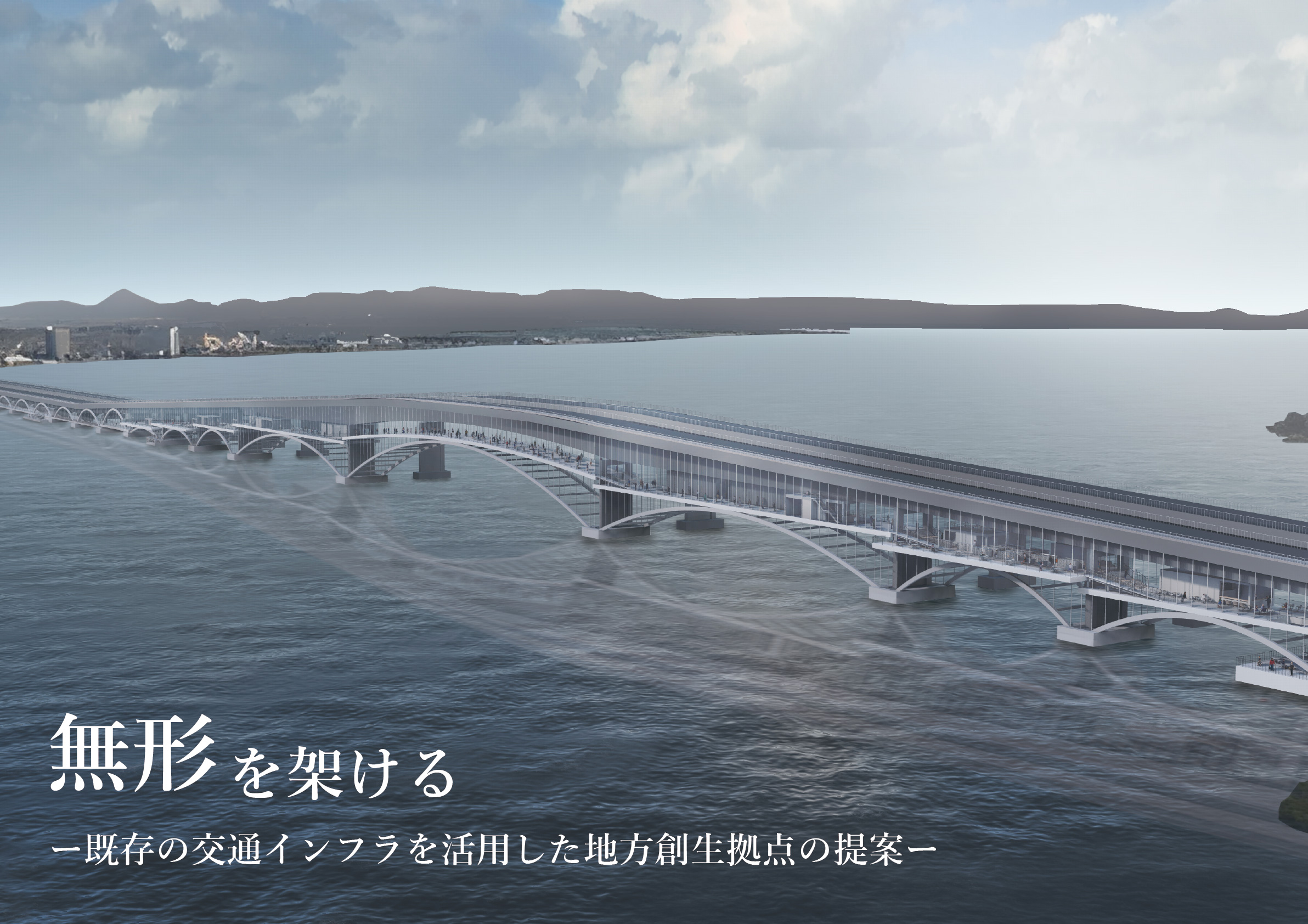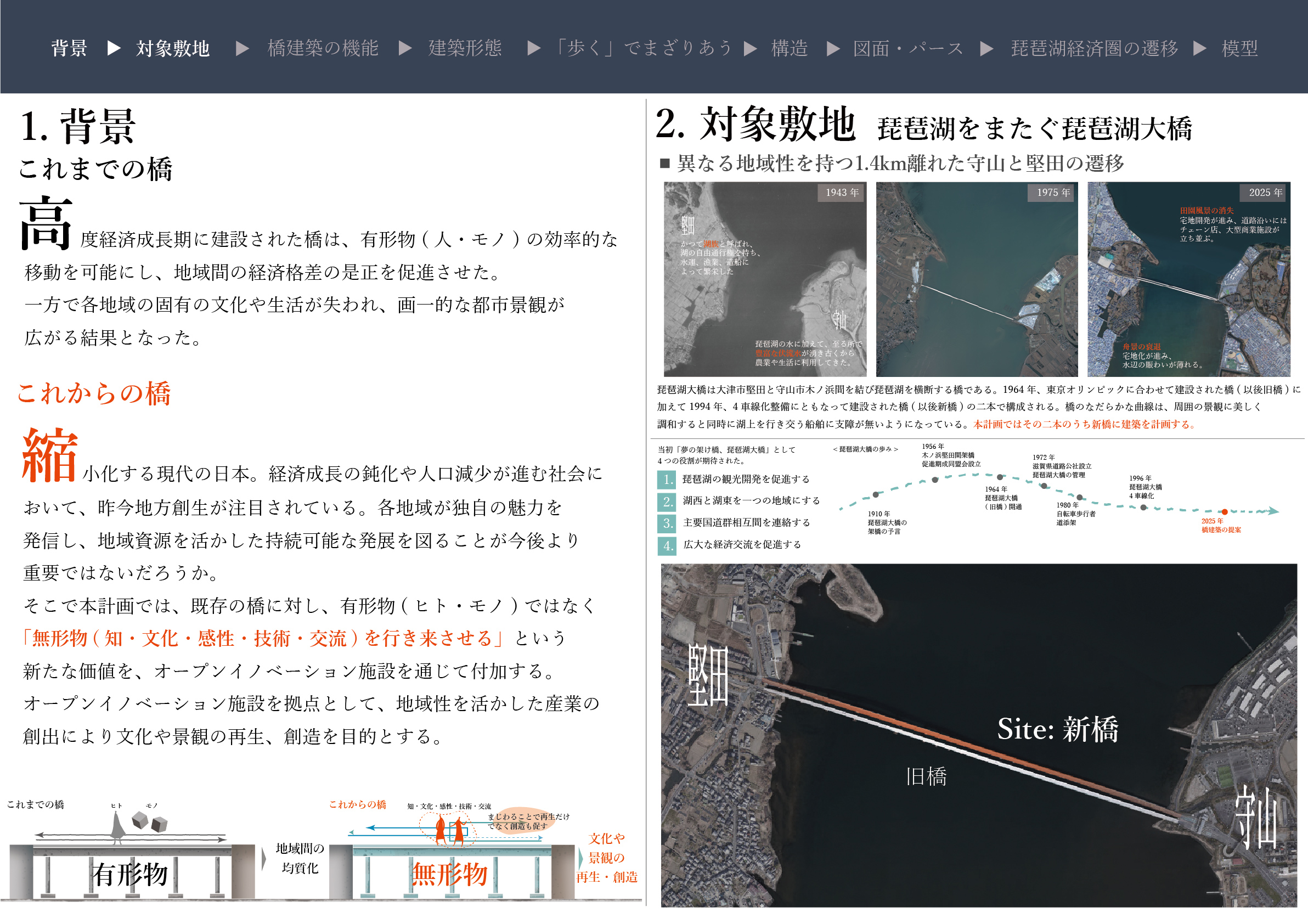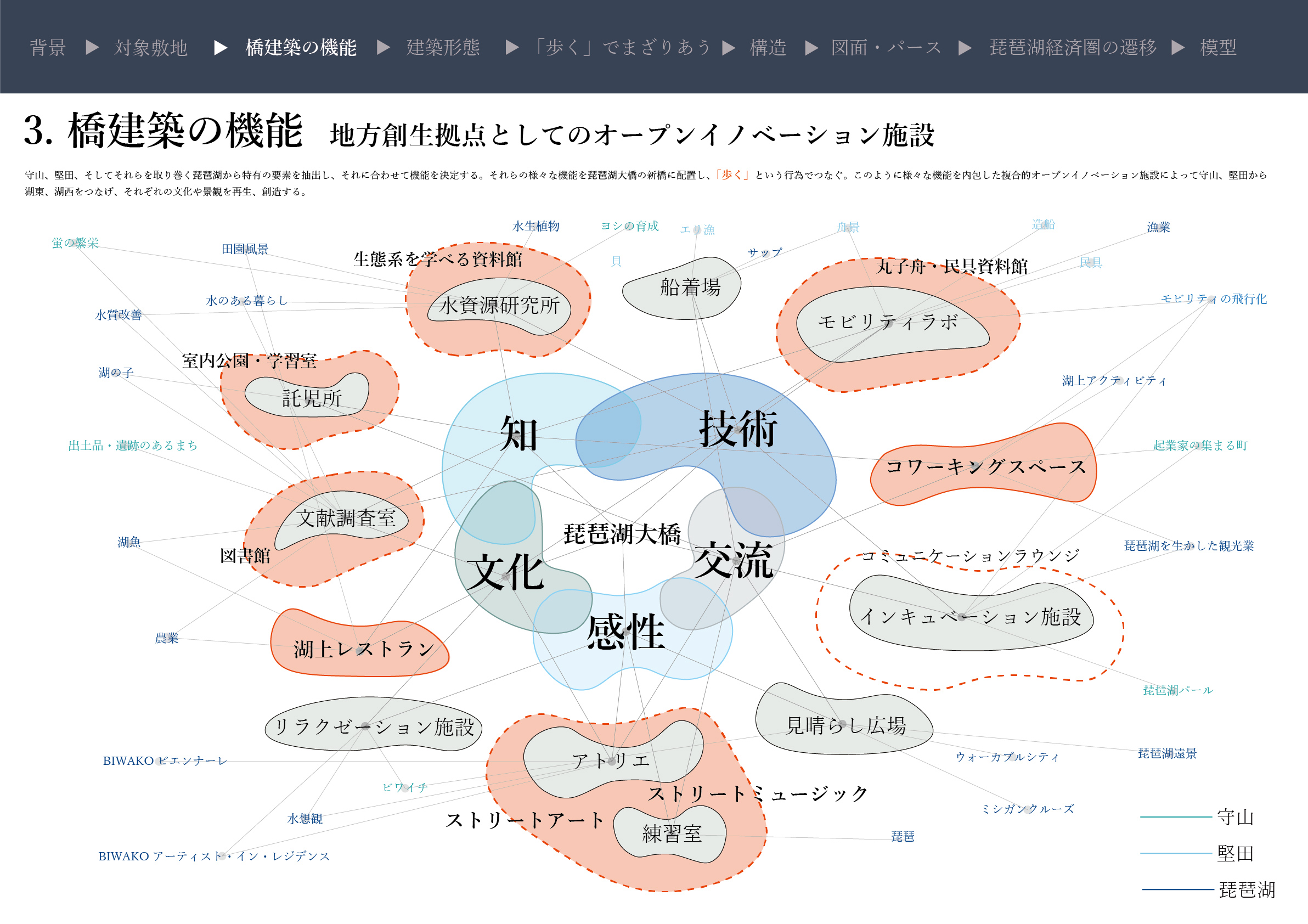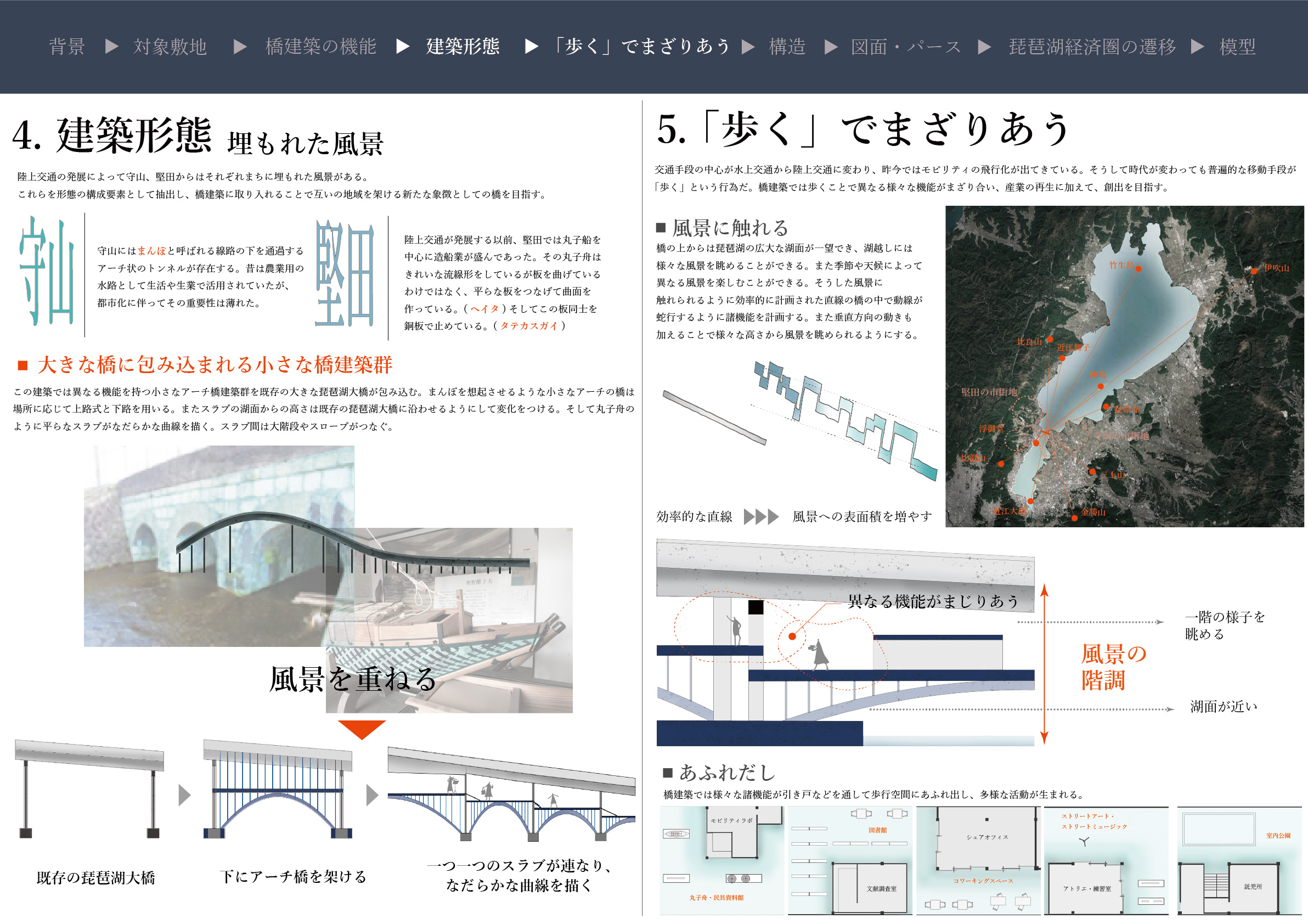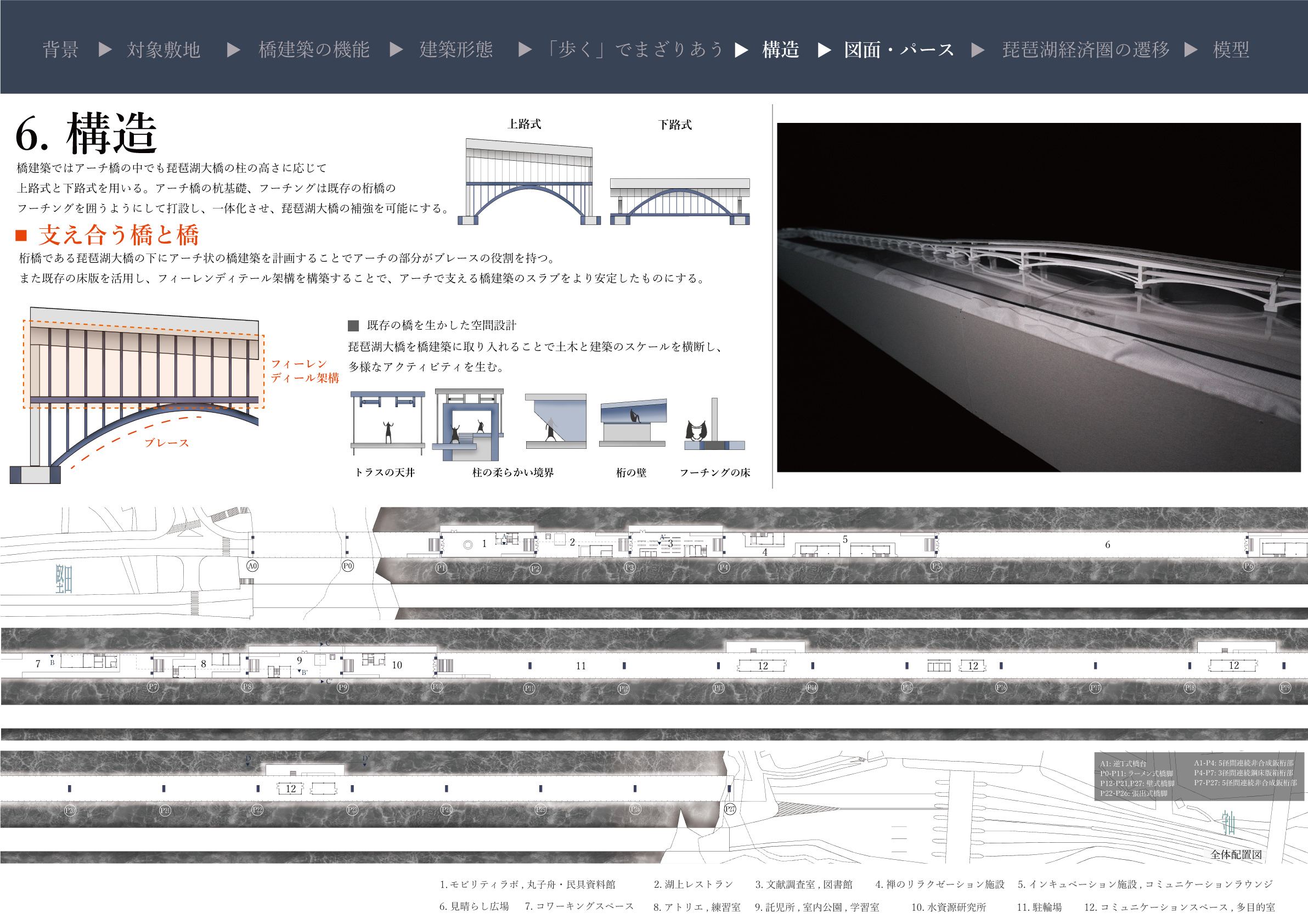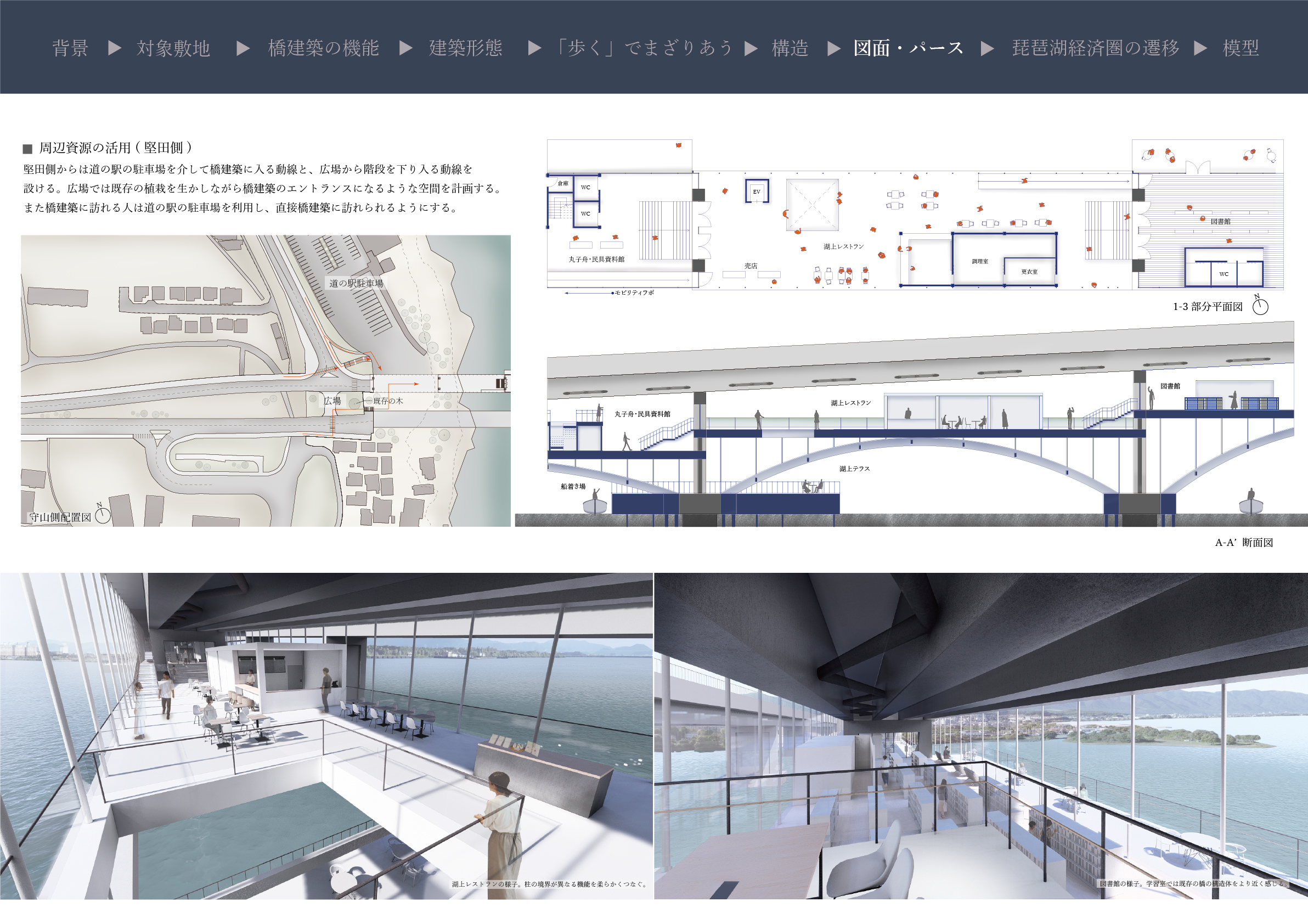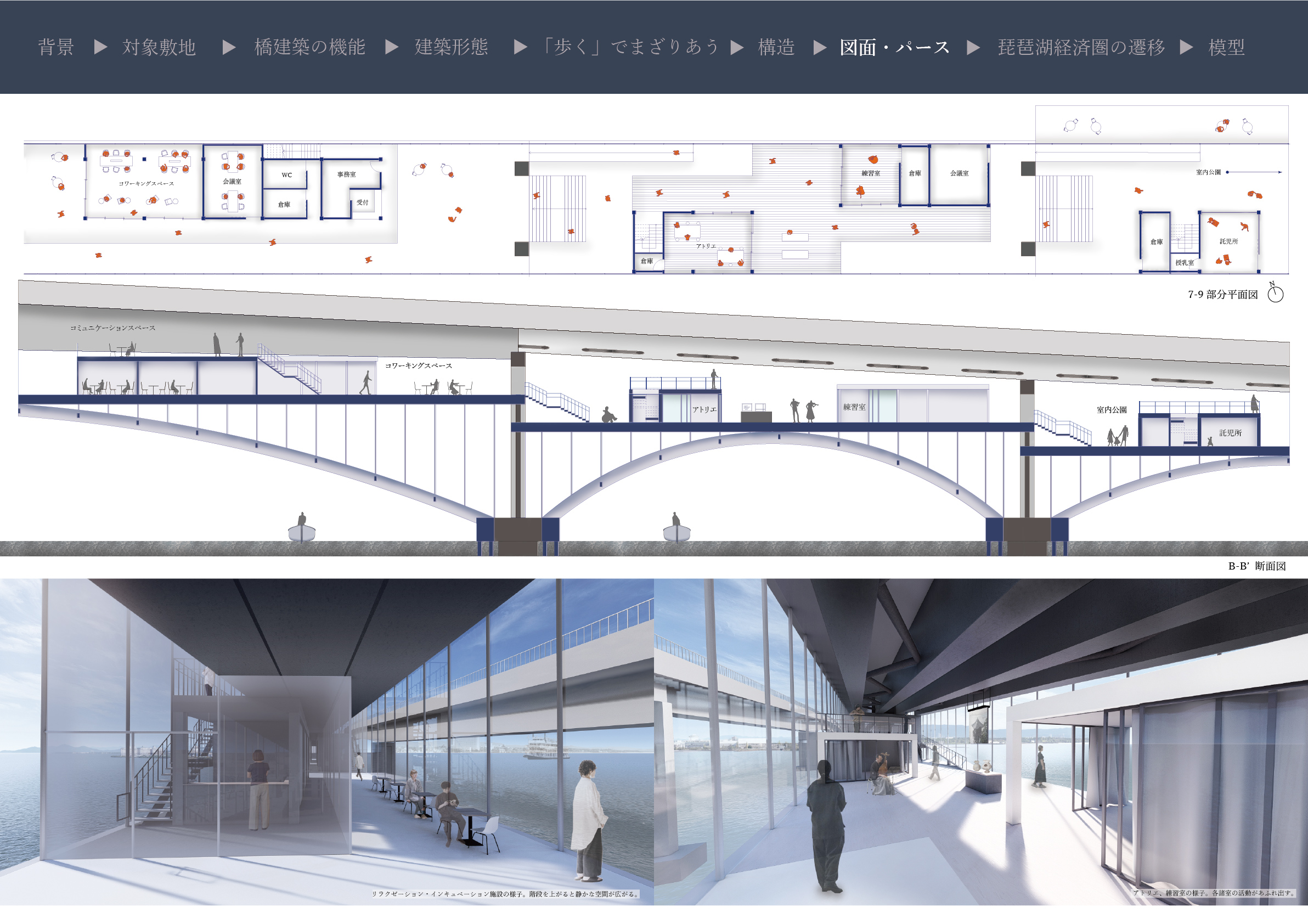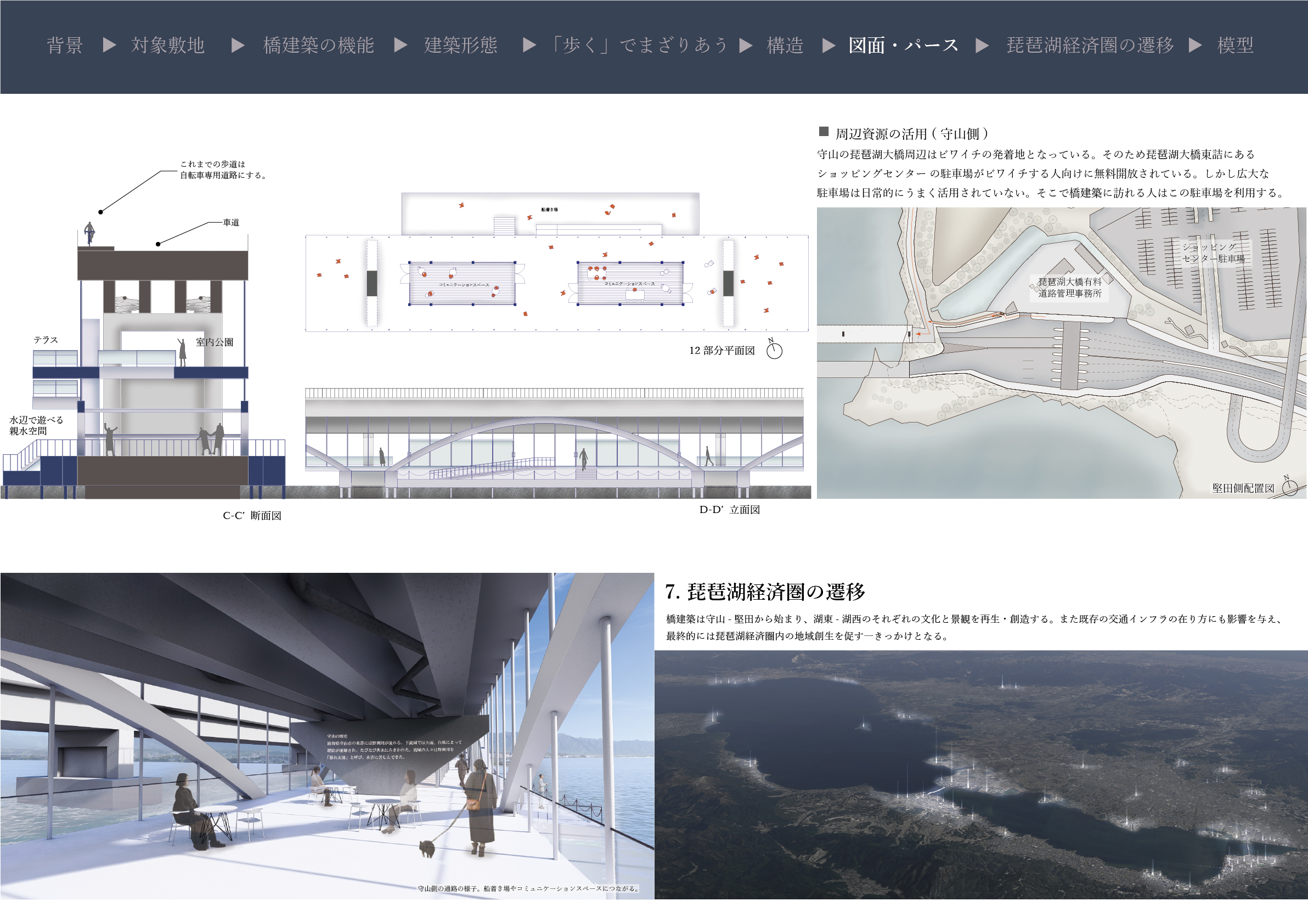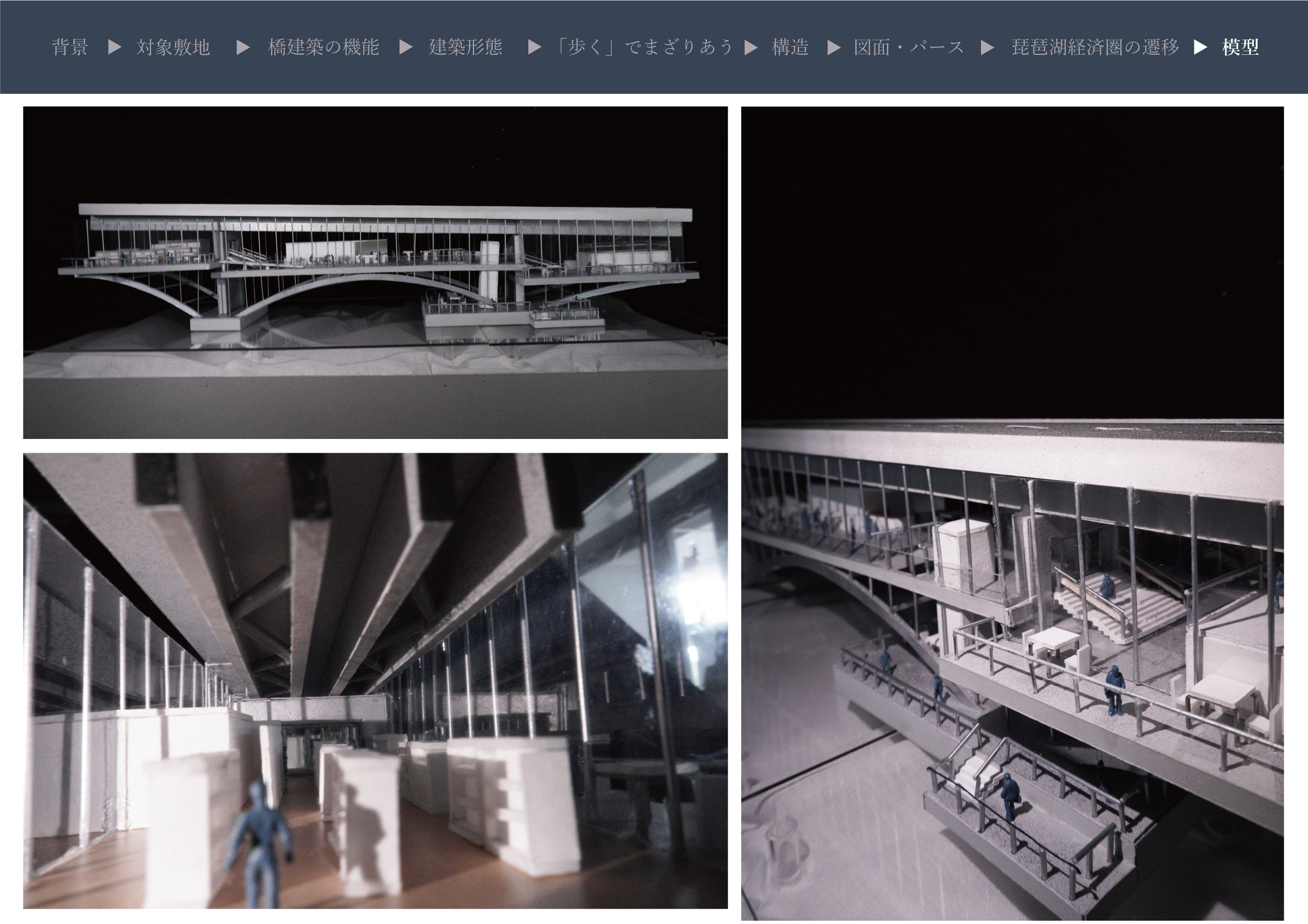無形を架ける-既存の交通インフラを活用した地方創生拠点の提案- Bridging the Intangible -Proposal for Regional Revitalization Hubs Utilizing Existing Transportation Infrastructure
藤本理玖 Riku FUJIMOTO
作品コンセプト
- JP
- EN
高度経済成長期に建設された橋は、有形物(人・モノ)の効率的な移動を可能にし、地域間の経済格差の是正を促進させた。一方で各地域の固有の文化や生活が失われ、どこにでもあるような景観が広がる結果となった。高度経済成長期から半世紀以上が立ち、経済成長の鈍化や人口減少が進む縮小社会において、昨今地方創生が注目されている。
本計画では、既存の橋である琵琶湖大橋を対象に有形物(ヒト・モノ)ではなく「無形物(知・文化・感性・技術・交流)を行き来させる」という新たな価値を、オープンイノベーション施設を通じて付加する。そして地域性を活かした産業の創出により文化や景観の再生・創造を目的とする。本計画がこれからの橋の在り方、今ある交通インフラとの向き合い方を考えるきっかけになることを願う。
During Japan’s rapid economic growth, bridges facilitated the movement of people and goods, reducing regional disparities but also erasing local culture and landscapes. More than half a century has passed since Japan’s period of rapid economic growth, and in a shrinking society, regional revitalization has become increasingly important. This project aims to add new value to Biwako Ohashi by 'bridging the intangible,' fostering regional industry revitalization and landscape. This project will serve as an opportunity to reconsider the role of bridges and how we engage with existing transportation infrastructure.

